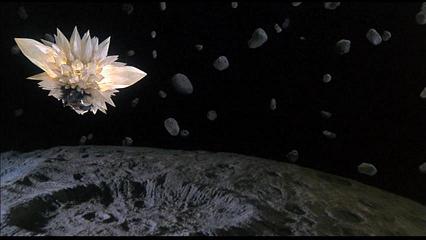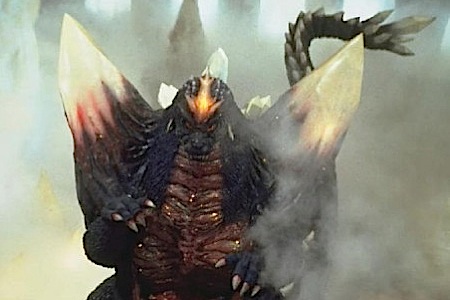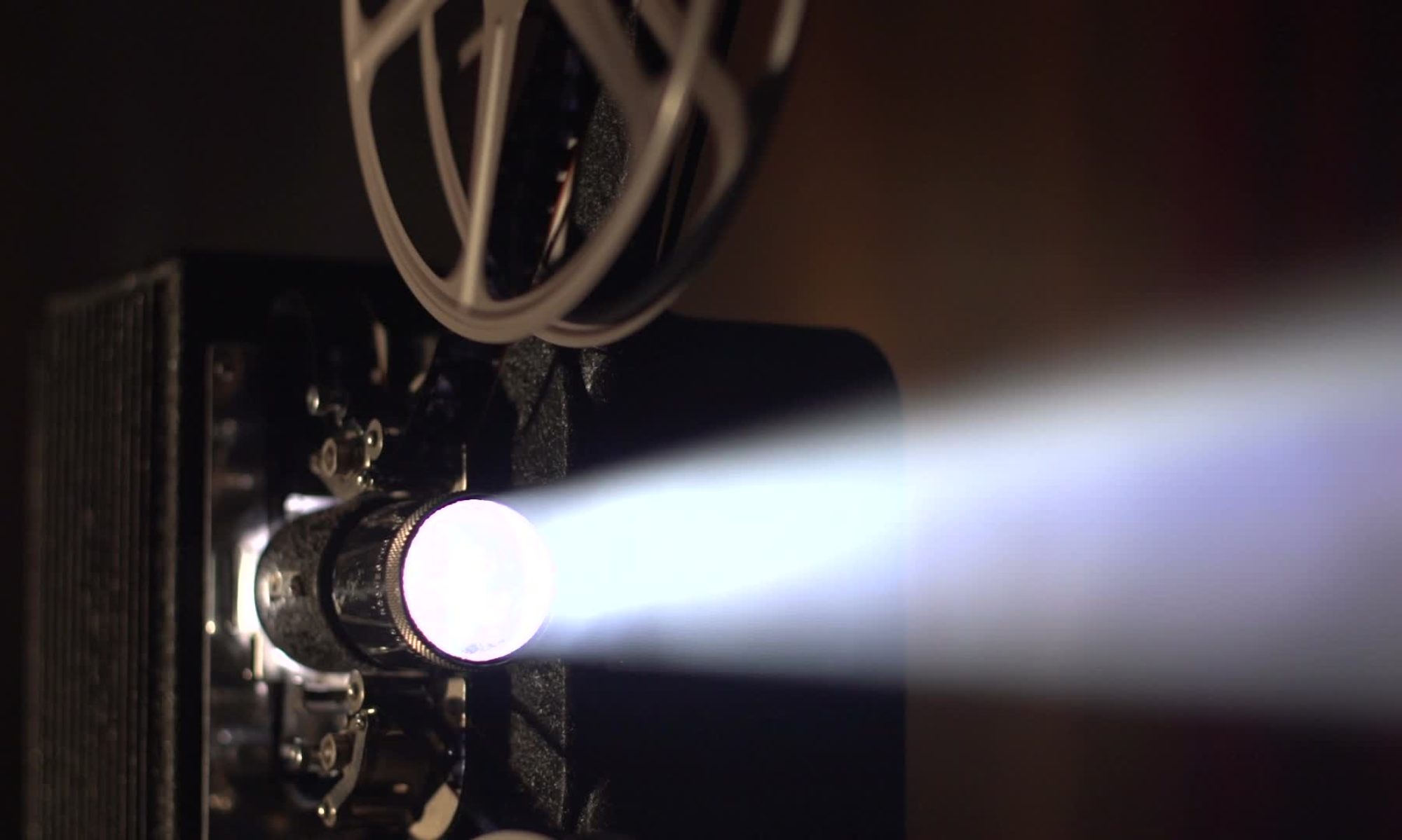
Longtime Godzilla fans may be surprised to learn that I consider Godzilla vs. SpaceGodzilla to be one of my favorites of the entire series. The reason for this is that, ever since the film’s original release back in 1994, it has not only been viewed as a below average film in the long running franchise, but is often ranked as one of the worst. While I admit that the film is far from perfect, I simply don’t understand anyone putting this film in the same boat as, say, Godzilla’s Revenge or Godzilla vs Megalon even though it often is. For me, however, Godzilla vs. SpaceGodzilla is incredibly entertaining with many strengths that many fans seem to overlook.
What is Godzilla vs SpaceGodzilla?
By the time Godzilla vs SpaceGodzilla was released in 1994, the Heisei Godzilla series was well under way with Toho again putting a new film out each and every year. The three prior films had all gone out of their way to reinvent classic monsters from the Showa era, but Toho decided to celebrate Godzilla’s 40th anniversary with an original antagonist.
Directing duties for Godzilla vs SpaceGodzilla were handed over to Kensho Yamashita who, though not wholly inexperienced with kaiju movies, was better known for his teen idol dramas at the time. From the get go, he and screenwriter Hiroshi Kashiwabara wanted to take the film in a very different direction from the rather grim film’s that preceded it, and give it a more lighthearted and character focused with special focus being given to the psychic girl Miki Saegusa who had had minor roles in the last few films.
SpaceGodzilla himself had been conceived, in a sense, as early as 1978. However, in order to incorporate him into the Heisei, he was designed as something of an homage to Biollante with tusks and a high pitched roar. SpaceGodzilla ended up going through multiple redesigns from crystalline creatures to a western dragon like creature before finally resting on a design similar to Super Godzilla from the Super Nintendo game of the same name.
Upon release, Godzilla vs SpaceGodzilla was a moderate success at the box-office, but has since been viewed pretty negatively by the majority of Godzilla fans, with many siting the film’s lighter tone in comparison to the films immediately preceding and following it as well as its unusual cast of kaiju.
What is Godzilla vs SpaceGodzilla About?
Roughly a year after the events of Godzilla vs MechaGodzilla II, the G-Force has come up with two plans to deal with the ongoing Godzilla crisis codenamed Project-T and Project-M. Project-T would use a mixture of ESP and techological enhancement to control Godzilla while Project-M would put to use the new mech, M.O.G.U.E.R.A, an upgrade from MechaGodzilla, to kill the beast. The G-Force approaches psychic Miki Saegusa with an offer to herald Project-T. However, she is reluctant since, after becoming close to Baby-Godzilla in the previous film, she has come to feel a unique compassion toward Godzilla. However, after the Cosmos, Mothra’s fairy priestesses, contact her and warn her that Godzilla must be kept alive to defend the earth from an approaching space monster, she reluctantly agrees.
Meanwhile, in preparation for Project-M, two G-Force agents arrive on Birth Island, where Baby-Godzilla was taken after being adopted by Godzilla, in order to seek out Yuki, who has been stationed there, and ask him to pilot M.O.G.U.E.R.A. Upon arrival, they are informed that Yuki has his own plan to kill Godzilla. Miki and the scientists from Project-T also arrive on the island and both groups begin their various preparations.
Back in Japan, footage of a strange creature rapidly approaching earth are seen by the United Nations after the complete distruction of the Space Station. M.O.G.U.E.R.A. is sent to destroy it, leading to a battle in the Astoroid Belt, but is quickly incapacitated as the space monster continues its approach.

On Birth Island, both plans are coming into fruition after Godzilla arrives until the space monster, revealed to be a twisted version of Godzilla himself, lands to do battle. Godzilla fights valiantly to defend his young son, but is easily bested by SpaceGodzilla’s immense power. However, after his long journey, SpaceGodzilla has been drained of energy, so he captures Little-Godzilla before departing in search of a power source, leaving Godzilla behind.

Upon returning to Japan with some of SpaceGodzilla’s cells, it is discovered that he and Godzilla are genetically identical. The theory is that SpaceGodzilla was born of Godzilla cells brought into space that fell into a black hole and were horrifically mutated by the intense pressure, before emerging out of a white hole and making its way back to earth. The only question is, will Godzilla himself prove to be friend or foe?
What Happens in Godzilla vs SpaceGodzilla?
If you couldn’t already tell from the plot above, Godzilla vs SpaceGodzilla has a lot going on. Much like Godzilla vs Biollante the plot feels a bit over-complicated, but the issue is worsened here with many of those plot points feeling underdeveloped. A good example of this is the Project-T and Project-M plans which, while interesting on paper, are touched on so shallowly that they almost feel like filler instead of crucial plot points. Sadly, this issue persists through almost the entire film with many moments just feeling either pointless or forced. This is exacerbated by the fact that, in reality, Godzilla vs SpaceGodzilla is a pretty simple story when you get down to it, leaving everything else feeling like needless padding.

One would think that this problem is alleviated once SpaceGodzilla himself arrives on earth (and it is somewhat) but it crops its head again once SpaceGodzilla departs Birth Island for the Japanese mainland with another underdeveloped and, as a result, mostly pointless side plot about the Japanese Mafia trying to use Project-T for their own purposes. I’m fine with movies having a lot going on, like Dune or Batman Returns, but only if those side plots add anything to the overall narrative. Sadly, in the case of Godzilla vs SpaceGodzilla, most don’t. They feel shoehorned in, which is a shame, since many of these ideas are pretty unique for a Godzilla movie and, if properly developed, could have made this film really stand out. As is, though, they just seem to bog down an otherwise pretty straightforward plot.
It might seem that I’ve dug Godzilla vs SpaceGodzilla an early grave, however, there are some positives here. For one, the film moves at a pretty fast pace meaning that, unlike Godzilla vs Biollante, it never seems to drag (in spite of all of the padding). Second, even when sequences feel pointless, they still manage to be entertaining. I don’t fully understand how it worked out that way, but I think it has to do with, again, the fast pace of everything and the more lighthearted tone. On top of it all, though, the monster battles are fantastic and plentiful. Sure, many fans love to point fingers and laugh at the asteroid battle, which doesn’t look fantastic I’ll admit, but it’s pretty short and the rest really hold their own. For one, SpaceGodzilla is just an awesome villain (in my opinion) and his powers are both interesting and varied which helps to really help him stand out from Godzilla’s massive rogues gallery.

How are the Effects in Godzilla vs SpaceGodzilla
Again, I need to mention Godzilla vs SpaceGodzilla’s asteroid sequence here. I do think that many g-fans make it out to be worse than it is, but having SpaceGodzilla and M.O.G.U.E.R.A. duke it out in a collection of stationary asteroids in a starless space is pretty….uninspired. There are a couple of other goofs here and there as well, due to a reduced budget and a rushed filming schedule. In one scene, Godzilla’s tail actually falls off as he’s diving into the water (though, to be fair, it’s hard to see it if you don’t already know it’s there) and a sequence where Godzilla does battle with the Japanese Navy was replaced with stock footage from Godzilla vs Biollante when Toho deemed the filmed footage “unacceptable.”

However, fans often fail to acknowledge when the effects in Godzilla vs SpaceGodzilla are at their best. For one, Godzilla’s arrival on Birth Island, when he slowly rises from the water, is breathtaking. For another, SpaceGodzilla’s design is very memorable and the suit looks fantastic whether in his terrestrial or his flying form. The rotoscoping on the beam attacks also looks a bit crisper and more dynamic than usual here, with SpaceGodzilla’s trademark corona beam looking especially impressive in motion.

While we’re talking about Godzilla vs SpaceGodzilla’s monsters, it’s important to mention the other two, Little-Godzilla and M.O.G.U.E.R.A. Little-Godzilla has been pretty drastically redesigned from his more dinosaurian look from the previous film to look more cartoonish and “cute.” The results are effective, but end up seeming a little out of place when Godzilla vs Destoryah turned it back the following year. M.O.G.U.E.R.A., on the other hand, made his debut in the 60s film, the Mysterians but was redesigned for Godzilla vs SpaceGodzilla in order to better integrate him into the Heisei Godzilla verse. While I don’t have any problem with him per se, and he really is more powerful than MechaGodzilla II when you get down to it, he looks like a downgrade by the nature of his more retro design. I like him overall and he does employ some interesting weapons and tactics throughout the course of the film, but he himself just isn’t as memorable or cool looking as the previous mechanized kaiju in the series (Mecha-King Ghidorah and MG 2). Overall, it’s a bit of an odd cast, but an interesting one that I don’t necessarily have a problem with as other G fans seem to.

How is the Music in Godzilla vs SpaceGodzilla?
Here’s another point where g-fans tend to rip on Godzilla vs SpaceGodzilla. Ifukube, the renowned composer for most of the earlier films, refused to compose for this one after he read the script meaning that the reins were handed over to Takayuki Hattori. Many fans cite that the music doesn’t often fit what’s going on on screen, which is true, and that the more light-hearted and chaotic tone seems out of place with the rest of the 90s films, which is also true. However, looking at this film by itself, the music really does stand out and enhance the tone the movie is going for. SpaceGodzilla’s theme is suitably eerie and forboding while M.O.G.U.E.R.A.’s comes across as heroic and Little-Godzilla’s comes across as childlike (which is fitting). The only one I really have an issue with is Godzilla’s theme which, while not bad by any means, seems a bit uninspired and repetitive.

Is Godzilla vs SpaceGodzilla a Good Movie?
In spite of my fondness for it, I cannot in good conscience call Godzilla vs SpaceGodzilla a “good” film, or even an exceptional Godzilla film. The plot is over-complicated and excessively padded, and it’s tone seems at odd with the series of films it’s trying to be a part of. On top of that, fans who want to watch the Heisei series of films in order could easily skip this one and Godzilla vs Mothra without skipping a beat.
However, I do consider it to be an immensely “entertaining” film even by Godzilla standards. The pace is fast enough that it never gets boring, and the tone is lighthearted enough to keep it from dragging (well, after about the first 20 minutes that is). The monster fights are plentiful and enjoyable to see, and the monsters all feel well handled. To top it all off, SpaceGodzilla is just an awesome adversary for the big G. A testament to this is that, even if this film isn’t held in the highest regard by g-fans, SpaceGodzilla himself manages to be pretty popular by his own right, often ranking with the likes of Destroyah and King Ghidorah.
Is Godzilla vs SpaceGodzilla flawed? Absolutely. But it’s also an incredibly entertaining one, which is what Godzilla films should always be anyway. I don’t know that I’d recommend it to Godzilla newcomers (I would lean Godzilla 2000 or GMK for that) but if your a Godzilla fan, I recommend giving this one another chance out of a fresh lense. Who knows, you may end up liking what you see as much as I did.
